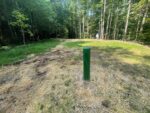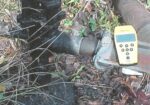- Like
- Digg
- Del
- Tumblr
- VKontakte
- Buffer
- Love This
- Odnoklassniki
- Meneame
- Blogger
- Amazon
- Yahoo Mail
- Gmail
- AOL
- Newsvine
- HackerNews
- Evernote
- MySpace
- Mail.ru
- Viadeo
- Line
- Comments
- Yummly
- SMS
- Viber
- Telegram
- Subscribe
- Skype
- Facebook Messenger
- Kakao
- LiveJournal
- Yammer
- Edgar
- Fintel
- Mix
- Instapaper
- Copy Link
To find information about a particular oil or gas well (or to talk to agencies or others about it) it is best if you have the well’s API number. The API number (short for American Petroleum Institute number). It is like a well’s social security number. It is unique to that well and it is used by many web sites and entities to identify the well in question.
The full API number will have three sets of numbers separated by hyphens – the way a social security number looks. The three sets of numbers indicate the state – county – individual well. For example, in API well number 047-001-03456, the numbers 047 stand for West Virginia, the numbers 001 stands for Barbour County, and the numbers 03456 identify the particular well in Barbour County, West Virginia.
Well drillers/operators often have their own numbers for their wells that are not the API number! That number can be a starting point as explained below, but if it does not look like a social security number, it is not the well’s API number, and it will not be nearly as useful.
If you do not have the API number, there are several ways to get it.
First, the well’s API number is required by a State rule to be marked on the well itself somehow. Sometimes it is painted or scratched on a piece of pipe or equipment, sometimes it is imprinted on a metal tag hanging on the well etc. If it is not there (and for very old “orphaned wells” that is sometimes the case) try one of the other methods below.
Second, the web site of the State Office of Oil and Gas lets you search their oil and gas database. You can use other information like the company well number there if you have it, although that does not usually work very well.
Third, if you happen to be the mineral owner and are receiving royalties, call the company number on the royalty check stub and ask them. (Or if you are not the royalty owner, but know the royalty owner, ask them to do it for you.) If you are getting a royalty from a horizontal well, then your check stub is required by law to have the API number on it.
Fourth, you can use the State Department of Environmental Protection map website. First choose a “Map Layer” on the right. Maybe start with “Ersi street map” and then try “topo” and then maybe “2011 aerial photography”. Click on the ^ arrow on the left to drill down closer. Click and grab on the image to keep your target area in the center as you do that. When you drill down far enough, the county and individual well numbers of the API number will start showing up. (You can click on the well itself for a link to some information about a well, but there is more to be found at the West Virginia Geologic and Economic Survey site.)
Fifth, as a last resort, particularly usable if there is no API number on the well itself anywhere, call the oil and gas inspector for your area (you have to scroll down on that web site to get to inspectors) and tell him about the problem. If you have looked at the well carefully and the number is not there, tell him you are complaining about that; and if the driller/operator is still in business he should make them put it on. If the driller/operator is out of business he may still be able to help you find the number; or the well may have no number in which case he should come out and get its coordinates and give it a number and put it in the DEP data base and map.
Two cautions/tips when using the API number on web sites:
First, different web sites often only want an abbreviation of the number. The very useful WVGES “Pipeline” site is a site only about West Virginia wells, so it does not ask for the first number, 047, the state number. There you just use the middle numbers of the API number for the county. Some sites use a drop down menu of county names and just ask you for the individual well number.
Second, many web sites need three numbers for the state and for the county, and five numbers for the individual well. So you do not have three numbers for the county, or five numbers for the individual well, you may have to put 0’s in front of the numbers you have until you have enough numbers.




